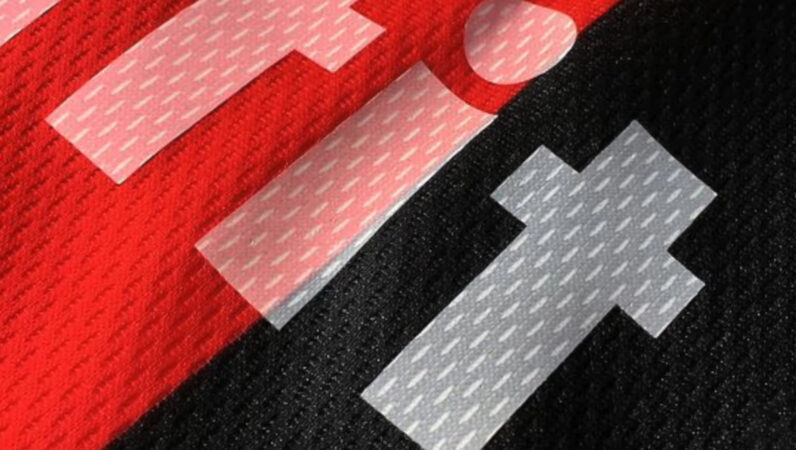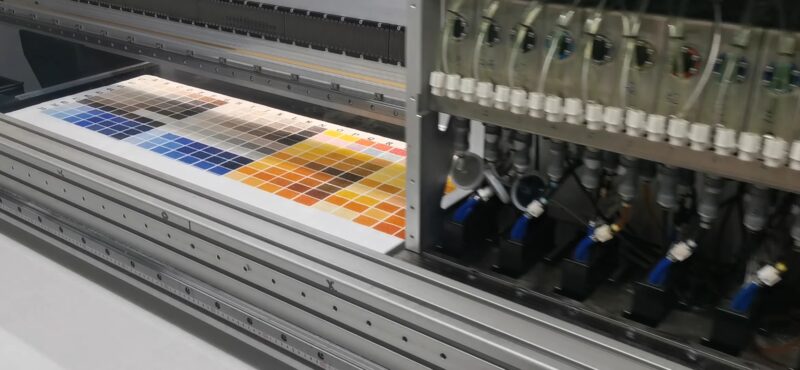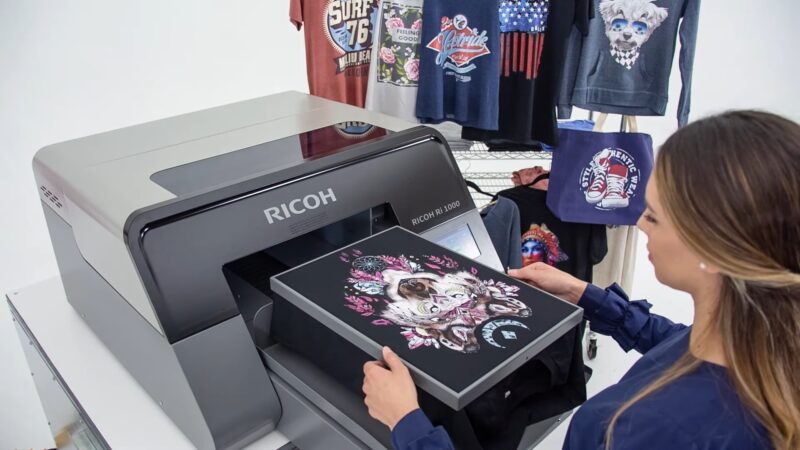Direct-to-garment printing, also known as DTG printing or digital printing, has only been around for about 20 years. But in that short time, this printing technique has revolutionized the fashion world in ways no one expected.
From its inception by a company named DIS in Florida to its rapid adoption by the global fashion industry, DTG has transformed the way we think about garment printing. Within a few years on the market, it was clear that DTG machines produced higher resolution images than any existing fabric printing method.
The market quickly realized that this printing method was much cleaner and easier to set up than screen printing. While other garment printing techniques still exist, DTG has become the printing method of choice for thousands of professional clothing printers all over the world.
How Does DTG Printing Work?
Direct-to-garment printing in textile is the process of embroidering, patterning, printing onto fabric of a costly modified inkjet tool to apply digital designs directly to the fabric. DTG machines work on the same basic principles as inkjet printers.
These printers use special print heads to apply water-based ink to fabrics. Because this type of ink applies only well to natural fibers, DTG printing pairs perfectly with fabrics such as bamboo, cotton, and hemp.
Before using this type of modified inkjet printer to print a design on your garment, your printing company will use a process called pretreatment. To pre-treat your garment, the printing company will apply a heated press that compresses the fiber.
Fibers such as cotton and bamboo often pull away from clothing, and this printing process flattens the fibers, which makes the printing process more effective. While pre-treatment is not required for every garment, it is essential when applying light or white ink dyes to dark-colored garments.
After the piece of garment is pretreated, your printing company will transfer the garment to a special table that holds the product in place during the printing process. The printhead will then apply the exact design that the printing company has uploaded to the connected computer.
How Long Does the Process Take?
It takes about three minutes to print a single garment with DTG. This print time will vary depending on the type of press your printing company uses and the complexity of the design.
Some DTG printers can print multiple shirts or other garments in a row. However, a technician may need to remove the printed garment and replace it with a blank piece of clothing to continue the printing process.
The time until the completion of your order depends on the capabilities of the printing company. For example, imagine you have an order of 100 hoodies that have designs on both the front and back.
If your chosen printing company only has one DTG printer, your collection may take several days to complete. If your printing company has other customers lined up in front of you, your order may take even longer.
Advantages and Disadvantages

Every printing method comes with its own set of advantages and disadvantages. While DTG has been celebrated for its high-resolution outputs and ease of use, it’s essential to understand both its strengths and limitations to make an informed decision for your printing needs.
Advantages
- High-Quality Results: DTG printing produces sharp, vibrant images that are hard to achieve with traditional printing methods.
- Perfect for Small Volumes: Unlike screen printing, which requires a significant setup for each design, is cost-effective for small batch or even single-shirt orders.
- Variety of Color Options: DTG printers can reproduce a vast range of colors, ensuring your designs are as close to your original vision as possible. This is especially beneficial for designs with gradients or a large number of colors. Learn more about the color capabilities of DTG.
Disadvantages
- Costly for Large Volumes: While perfect for small orders, the cost per unit can become prohibitive for large batches.
- Limited Placement Options: Printers typically have a fixed platen size, which can limit the areas of a garment that can be printed on.
- Durability Concerns: While the technology has improved significantly, DTG prints may not last as long as some other methods, especially if not cared for properly.
What Products Can Be Printed Using DTG?

The versatility of DTG printing extends beyond just t-shirts. With the rise in popularity of this method, a variety of products have emerged that leverage the benefits of digital garment printing.
Common Printed Products
- Apparel: This includes t-shirts, sweatshirts, hoodies, and even dresses and skirts. The soft feel of DTG prints makes it a favorite for clothing.
- Home Decor: Digitally printed sofa pillow covers, bedding sets, and even curtains bring a personalized touch to any living space.
- Accessories: Hats, scarves, shawls, and even tote bags can be enhanced with the detailed designs possible through DTG printing.
- Carpets and Rugs: Digitally printed carpets, mats, runners, and bathroom rugs have gained popularity, offering unique designs and patterns that stand out. However, it’s worth noting that these can come at a premium price due to the intricate printing process.
Frequently Asked Questions
Can DTG printers print on any color of fabric?
While DTG printers can print on various fabric colors, it’s essential to note that light-colored inks may not appear as vibrant on darker fabrics without a white ink underbase. However, with the right pre-treatment, even dark garments can achieve bright and vivid prints.
How should I wash and care for DTG printed garments?
To ensure the longevity of your DTG printed garment, it’s recommended to turn the garment inside out and wash it in cold water. Avoid using bleach or harsh detergents. Tumble dry on low or hang to dry. Avoid ironing directly on the printed area.
Is DTG printing eco-friendly?
Yes, many DTG inks are water-based and eco-friendly. Additionally, since there’s no need for screens or excess ink wastage, DTG printing can be considered a more environmentally friendly option compared to traditional printing methods.
Can I print on both sides of a garment with DTG?
Absolutely! DTG printers can print on both the front and back of a garment. However, each side would be treated as a separate print, so it might affect the printing time and cost.
Are there any size limitations for DTG designs?
The design size is typically limited by the platen size of the DTG printer. However, most standard designs that fit within the chest or back area of a t-shirt can be easily accommodated.
Final Words
Direct-to-garment printing has undeniably transformed the world of apparel printing, offering unparalleled detail, color vibrancy, and customization options. As technology continues to advance, the possibilities with DTG are limitless.
Whether you’re a business looking to produce high-quality custom apparel or an individual seeking a unique piece, DTG printing offers a solution that’s both efficient and of superior quality. Explore the world of DTG, and witness the future of garment printing unfold.
